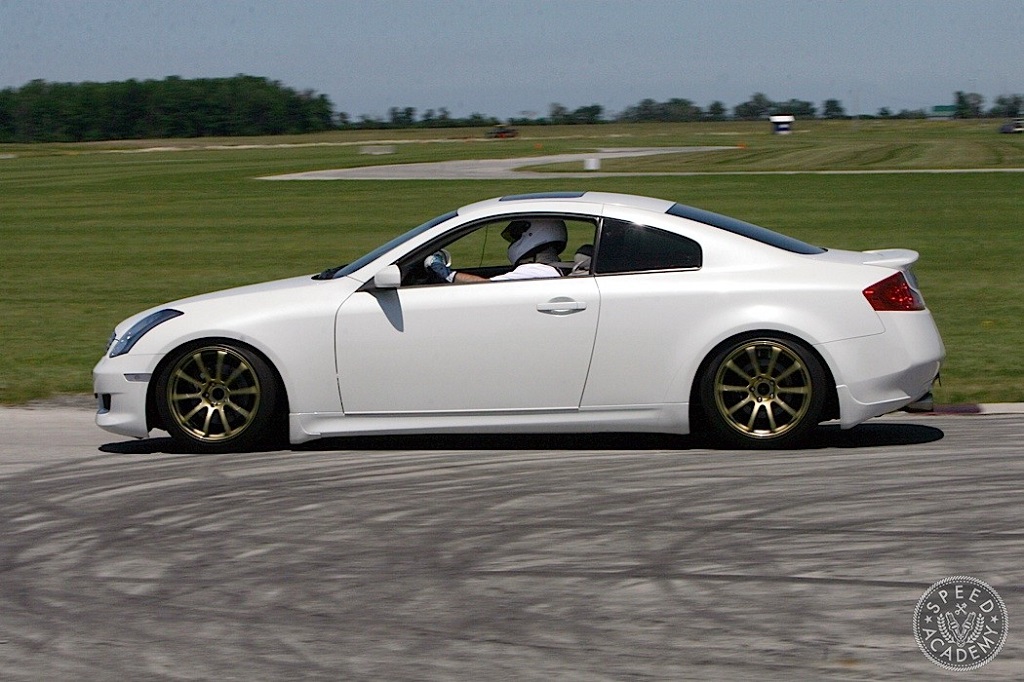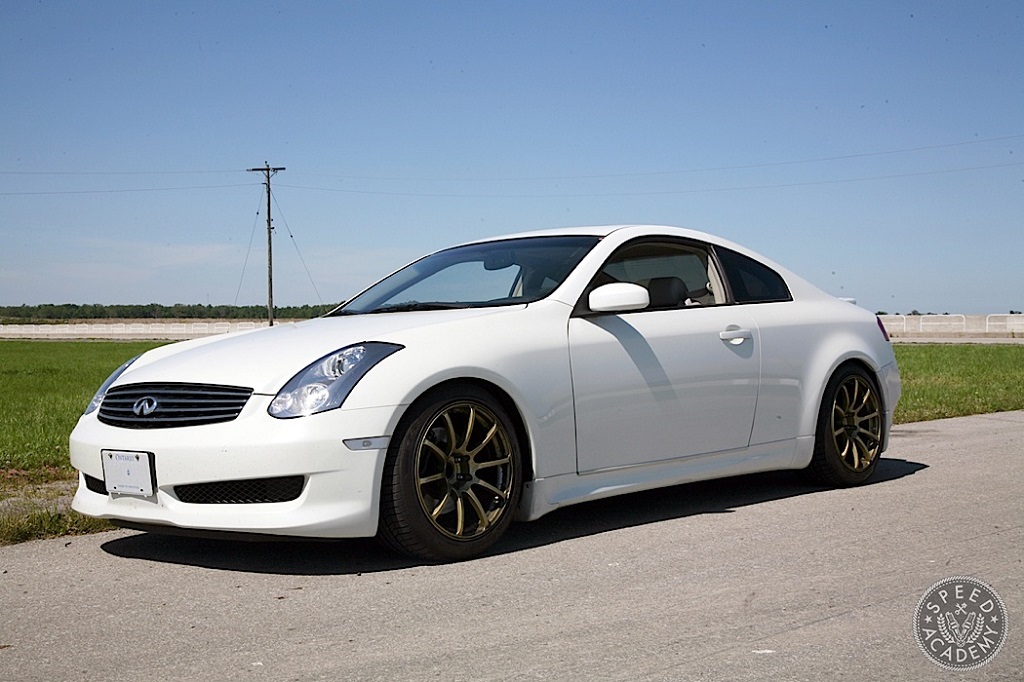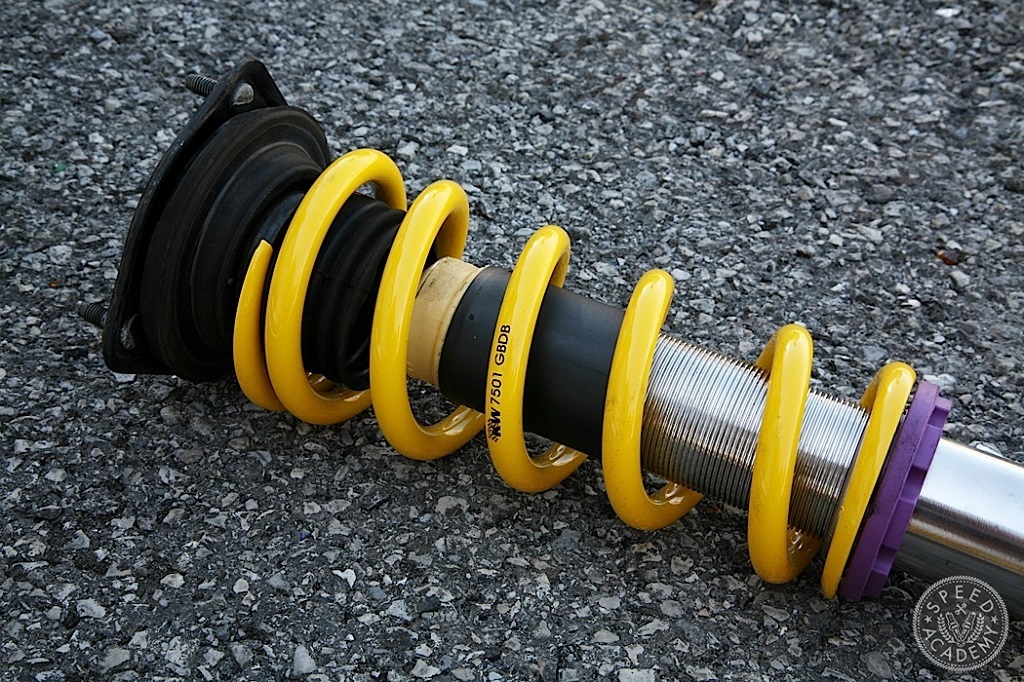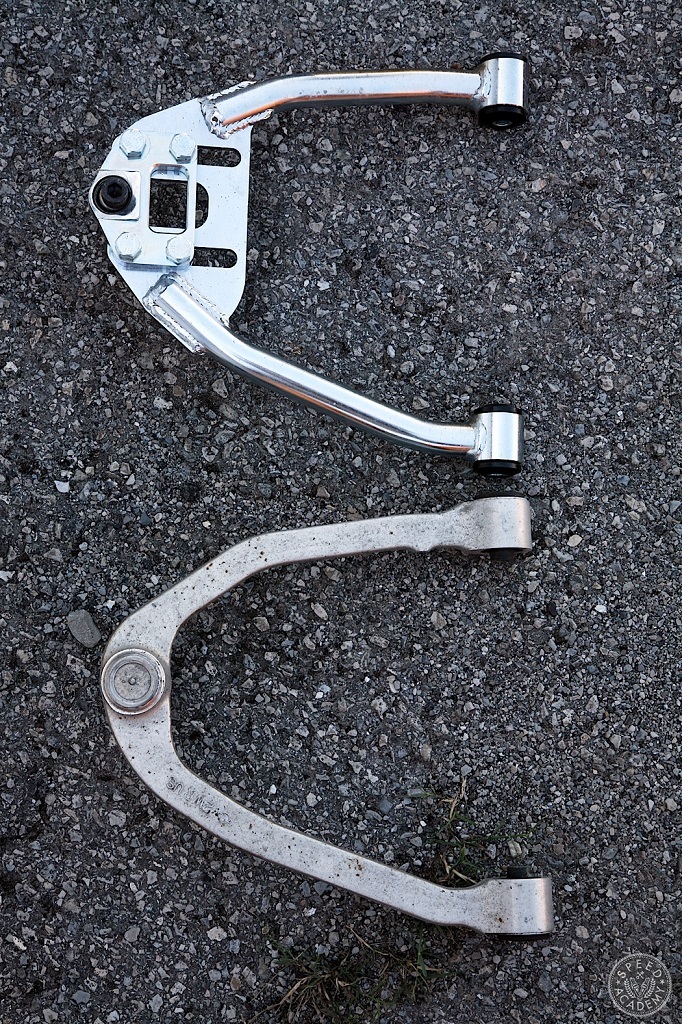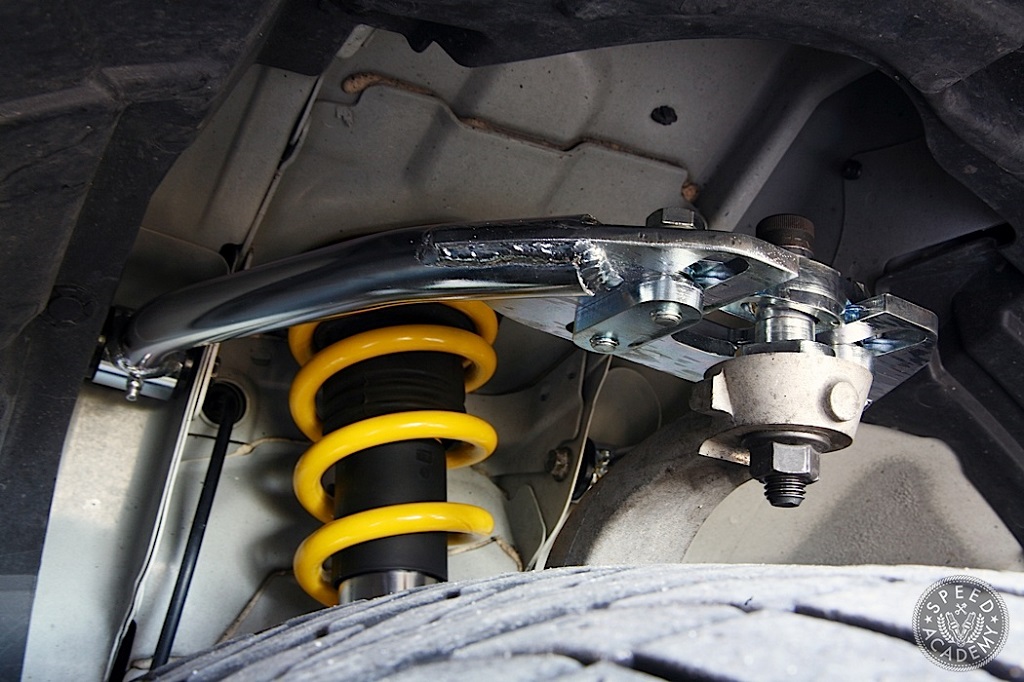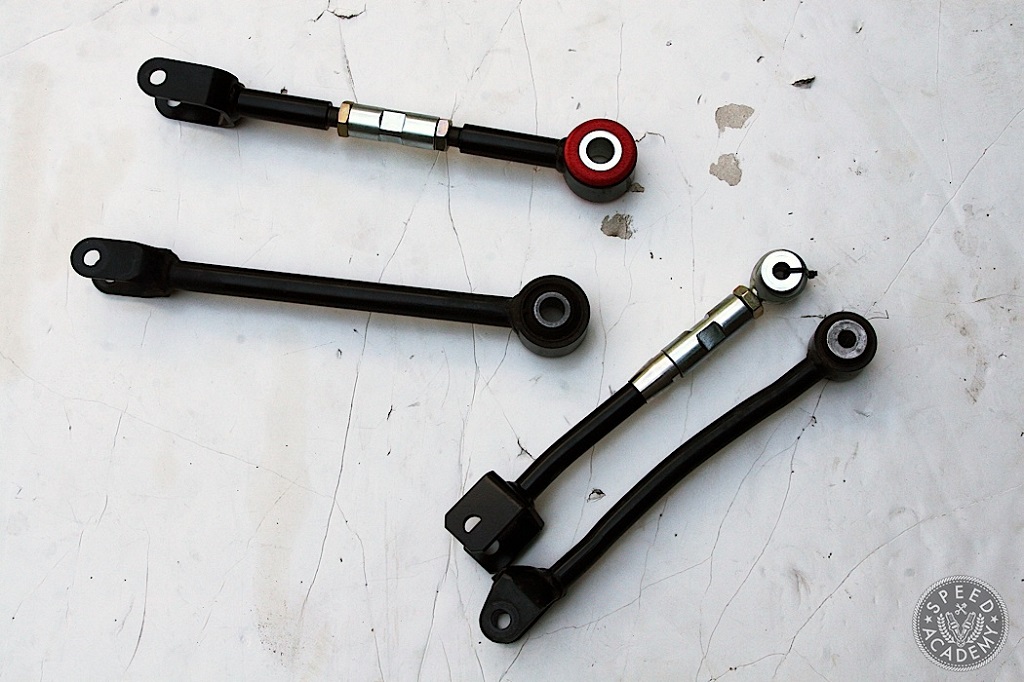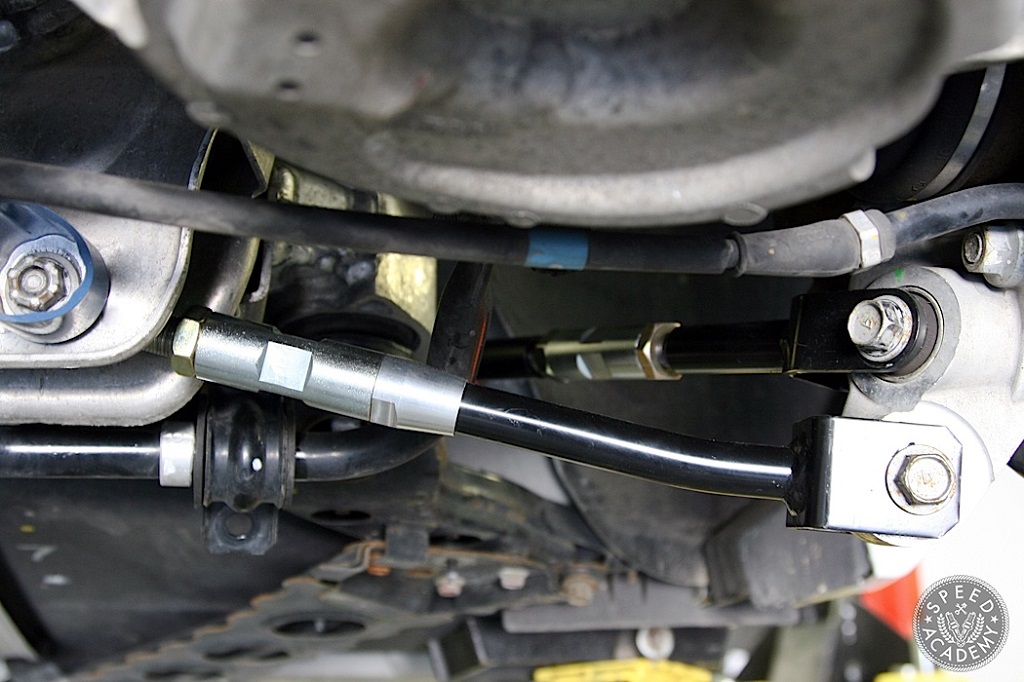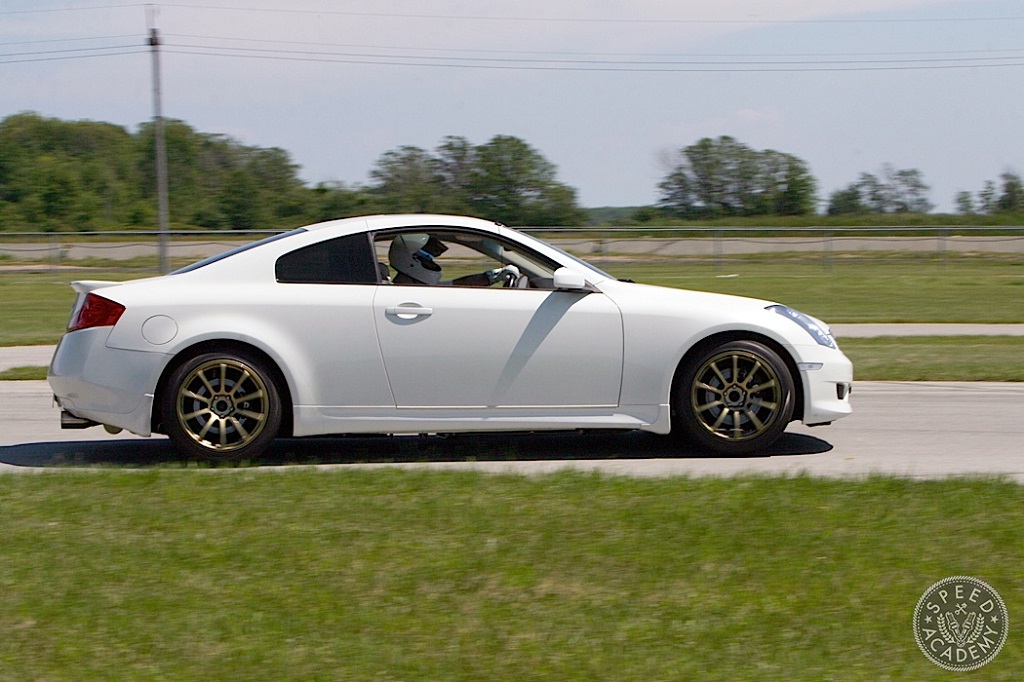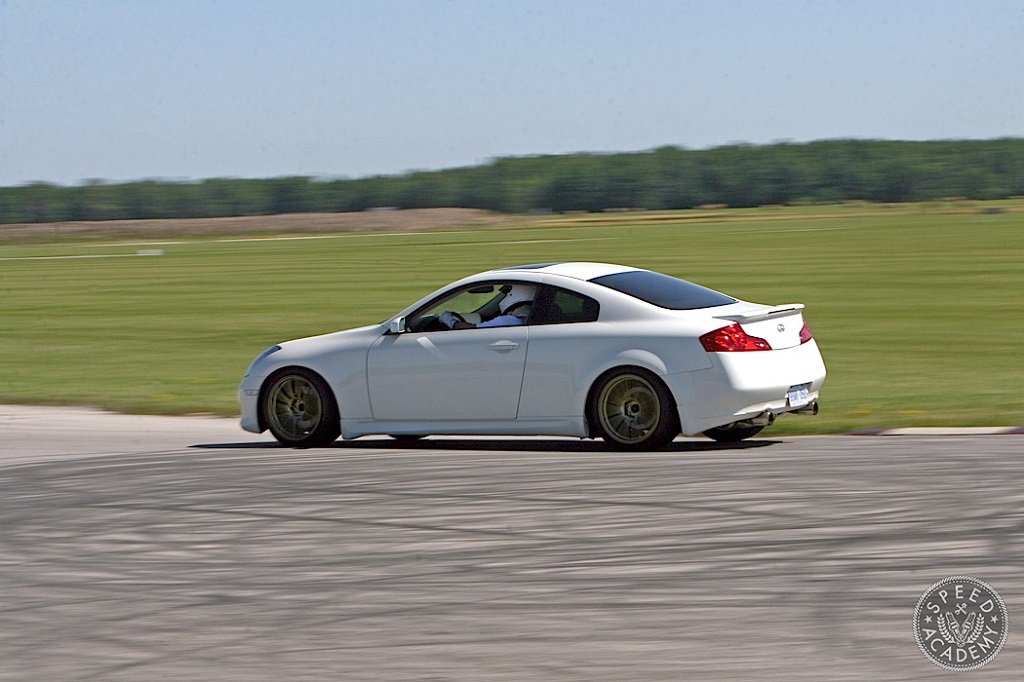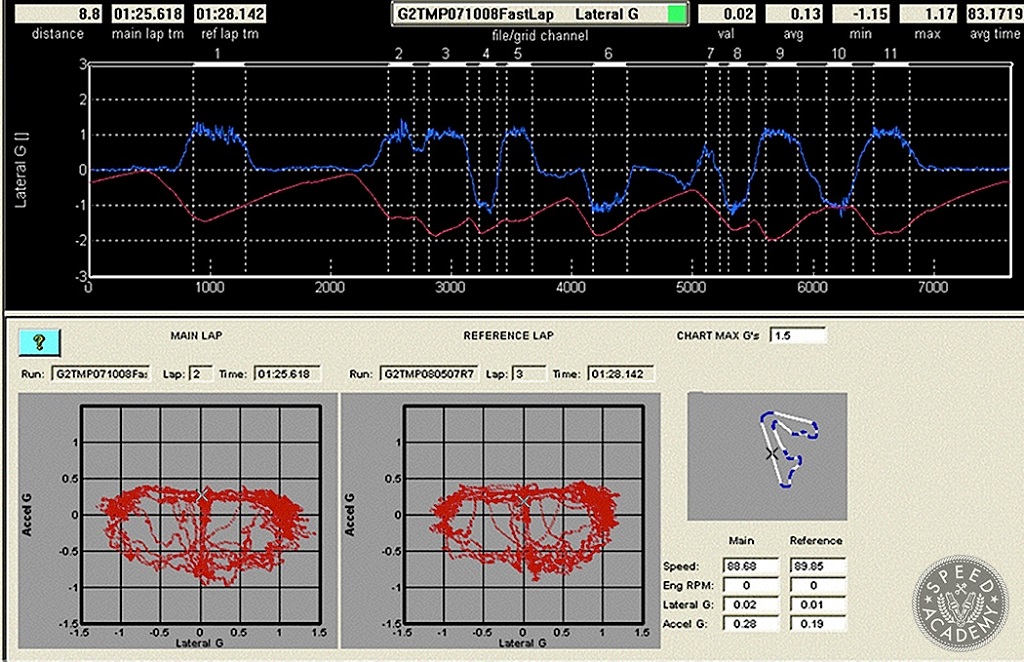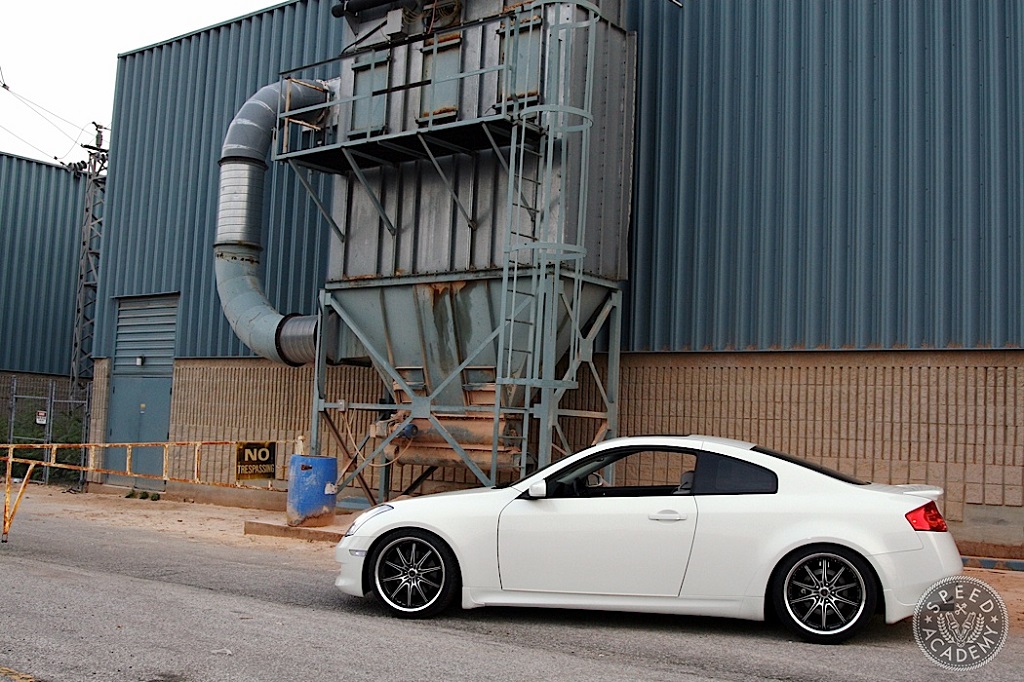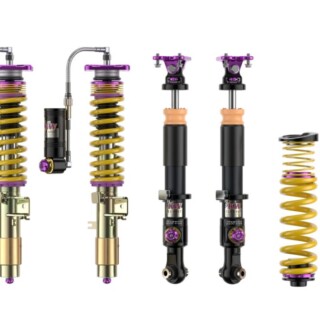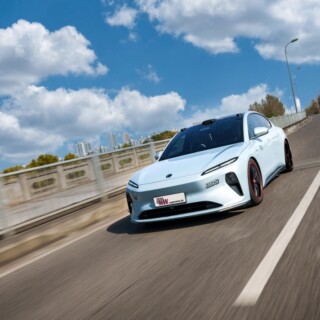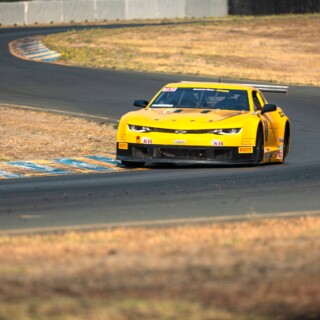So we showed you how to bolt up over 40-whp to a VQ35-powered G35 or 350Z, which shaved 1-second off its lap time around our local test track (Toronto Motorsports Park). Now we are going to show you were the biggest lap time improvements come from, starting with the grip component.
We had already upgraded to a set of 10 x 18 Zoll Advan Racing RS wheels and a wider set of 265/35R18 Goodyear’s Eagle F1 Asymmetric tires prior to setting a best lap of 1:28.142 at TMP. That’s still pretty slow around that track, and it was obvious that three things were holding the car back the most: body motion control (too soft a suspension), understeer galore, and pant-wetting amounts of brake fade.
We really should have addressed the brake fade first since it was downright dangerous at the track, but because I couldn’t be seen rolling at stock ride height, I started by swapping out the soft OE dampers and springs for KW Variant 3 coilover Kit along with Stillen front and rear camber adjustable control arms. As you can see, we did the wrenching at the track to ensure test conditions were consistent and thus any improvements seen being as meaningful as possible.
One of the features we like best about the Variant 3’s is that they feature independently adjustable low speed compression and rebound shock damping.
This means we can adjust how strongly the shocks resist low speed compression (or upward wheel travel when driving over a bump) via a 12-level adjuster mechanism located at the top of each shock’s piston shaft (high speed compression is preset by KW’s engineers).
At the top of each shock’s piston shaft there’s also a rebound 14-level adjuster, allowing you infinite control over how strongly the shock tries to push the wheel back down after a compression event has occurred.
By adjusting the compression and rebound independently, you can dial in your car’s handling for a variety of surfaces, from smooth highway cruising to rough backcountry roads to your favorite racing circuit and everything in between.
And being Canadians suffering through one of the harshest winters ever, we’re also big fans of the V3’s stainless steel shock bodies, which are extremely resistant to corrosion, so they’ll stay looking nice a shiny even when exposed to all the snow, slush, and road salt that gets thrown down this time of year. With a four-man team including Sasha from OnPoint Dyno and Moose our Targa tech we made short work of the swap, being sure to set up the compression and rebound settings on the shocks before installing them. This is especially important for the rear dampers, since there’s no easy way to get at the compression adjuster on the top of the rear shocks once they’re installed.
We decided to use fairly aggressive shock settings since we wanted to maximize on-track performance for the test. We went with 70% compression stiffness on all four corners to start, along with 80% rebound stiffness all around. We lowered the ride height by about 1.5-inches in the front and 1.25-inches in the rear, evening out the wheel well gap and helping corner balance the car’s weight distribution a bit in the process.
Although we didn’t have any high tech alignment tools or corner scales at the track, we did a basic track alignment using a hand-held camber gauge and aligned the wheels using toe plates and measuring tapes, just like I described in our.
We dialed in about 2.5-degrees of negative camber on each front wheel using the adjustable upper spherical bearing on the Stillen front upper control arms, along with 1/16-inch of toe out.
Only minor adjustment of the rear lower Stillen camber arms was needed, since the lower ride height gave us close to the 1.5-degrees of negative camber we settled on, along with zero rear toe. But the Stillen rear arms are very easy to adjust, so for you grip or drift guys these things are a great investment.
KW uses mildly progressive springs on the Variant 3 kit for this car, with rates of about 6 kg/mm front and 4 kg/mm rear once the initial progressive stage has been compressed. So it came as no surprise that I could feel the G35 roll and the suspension compress and then take a set once I started to turn some hot laps. Still, the car felt much better balanced, with virtually no turn-in understeer to fight with and superb mid-corner composure and balance.
After a quick review of the data recorded on my MSD G2X data acquisition system, I decided to increase the compression settings on the front shocks to full stiff, to better control weight transfer and hopefully optimize front grip without inducing any unwanted understeer.
This setup change worked as planned, with my best lap time falling to 1:25.618, a full 2.5-seconds faster than our best baseline set just a few hours earlier.
Once we downloaded all the G2X data to a laptop computer, it was easy to see that lateral g-forces and corner speeds had improved tremendously, with lateral g’s increasing by as much as 0.2g to 0.3g in the faster corners.
In the slower corners the gap between the KW setup and the baseline setup wasn’t as pronounced, but we did still see consistently higher lateral g-forces and faster cornering speeds across the lap, verifying that the KW coilovers and Stillen-improved alignment were paying big dividends.
Generally speaking we see a 1.5- to 2-second lap time improvement when converting a car to a high quality coilover system like KW V3’s, which goes to show that the G35 benefits more than most cars given that it cut 2.5 seconds off its stock suspension lap time. And the ride quality on the street, though certainly firmer than OE, was still quite civilized. Yes, there’s a bit of added harshness over high-speed bumps like seams or potholes, but everything is nicely controlled. And from an aesthetic standpoint, the G certainly looked 1000 times nicer with the wheel well gap gone. All in all, we’d say there’s virtually no downside to this combo of KW V3 coilovers and Stillen camber arms, other than a tiny bit extra ride harshness on the street, with huge upsides at the track and in the looks department.
Photos Speed Academy



